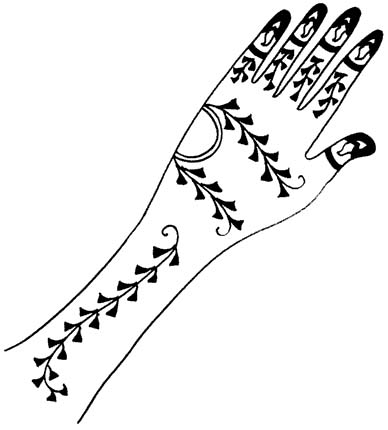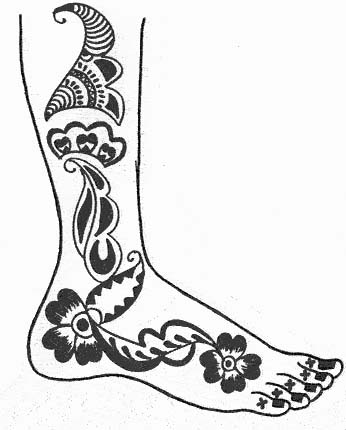Mehandi Design On Paper Biography
source(google.com.pk)Miranda May Kerr (born 20 April 1983)[1] is an Australian Top model. Kerr rose to prominence in 2007 as one of the Victoria’s Secret Angels. She is the first Australian to participate in the Victoria’s Secret campaign and also represented Australian fashion chain David Jones. In addition, Kerr has launched her own brand of organic skincare products, Kora Organics, and released a self-help book, Treasure Yourself. Miranda Kerr began modelling in the fashion industry when she was 13, starting at Chaay’s Modelling Agency, and soon after winning a 1997 Australian nationwide model search hosted by Dolly magazine and Impulse fragrances.[4] She is married to English actor Orlando Bloom
A popular way to draw henna designs is through henna cones that can be rolled by you. Henna cones are to henna what pens are for ink and are preferred when very delicate bridal mehndi patterns are desired. Be advised that they can be messy and for this reason, many prefer to use toothpicks, trading off some loss of detail.
One does not need art skills to create mehndi patterns. All that’s needed is some imagination and patience. In fact, traditional mehndi patterns are formed by combinations of simple geometric shapes like curves, triangles or hearts.
Begin by choosing a simple shape as your dominant theme, such as a circle. Expand on it from there. The design can be done on the hand or other part of the body. If you are new, it is best to get it right on paper first. Keep in mind that the henna dye dries quickly and forms difficult to remove stains. Once you are happy with the 2012 Mehndi Designs on paper, you can do one of two things. Draw the design and use the sketch as your guide. Or use a sheet of carbon to transfer the mehndi design on to the skin. The first method is preferred because it allows you to get the size right more easily.
Before drawing your first design, it is recommended that you watch a few videos on bridal mehndi design. You will notice the incredible diversity in style from one designer to the next. In time, and with practice, you will discover the mehndi designs that flow naturally through you perhaps even decide to become a professional bridal mehndi design
Mehndi is the application of henna as a temporary form of skin decoration in India, Pakistan and Bangladesh as well as by expatriate communities from those countries. The word mehndi is derived from the Sanskrit word mendhikā.[1] The use of mehndi and turmeric is described in the earliest Vedic ritual books. Haldi(Staining oneself with turmeric paste) as well as mehndi are Vedic customs, intended to be a symbolic representation of the outer and the inner sun. Vedic customs are centered around the idea of "awakening the inner light".
Traditional mehndi designs are of representations of the sun on the palm, which, in this context, is intended to represent the mind.
Mehndi decorations became fashionable in the West in the late 1990s, where they are sometimes called henna tattoos. Henna is typically applied during special occasions like weddings and Muslim Festivals such as Eid-ul-Fitr and Eid-ul-Azha . Similarly in Hindu festivals like Karva Chauth, Diwali, Bhaidooj and Teej. In some Hindu festivals, many women have Henna applied to their hands and feet. It is usually drawn on the palms and feet, where the design will be clearest because the skin on these surfaces naturally contains less of the pigment, melanin. Henna was originally used as a form of decoration mainly for brides.
Mehndi is the application of henna as a temporary form of skin decoration in India, Pakistan and Bangladesh as well as by expatriate communities from those countries. The word mehndi is derived from the Sanskrit word mendhikā.[1] The use of mehndi and turmeric is described in the earliest Vedic ritual books. Haldi(Staining oneself with turmeric paste) as well as mehndi are Vedic customs, intended to be a symbolic representation of the outer and the inner sun. Vedic customs are centered around the idea of "awakening the inner light".
Traditional mehndi designs are of representations of the sun on the palm, which, in this context, is intended to represent the mind.
Mehndi decorations became fashionable in the West in the late 1990s, where they are sometimes called henna tattoos. Henna is typically applied during special occasions like weddings and Muslim Festivals such as Eid-ul-Fitr and Eid-ul-Azha . Similarly in Hindu festivals like Karva Chauth, Diwali, Bhaidooj and Teej. In some Hindu festivals, many women have Henna applied to their hands and feet. It is usually drawn on the palms and feet, where the design will be clearest because the skin on these surfaces naturally contains less of the pigment, melanin. Henna was originally used as a form of decoration mainly for brides.
Mehandi Design On Paper Patterns Images Book For Hand Dresses For Kids Images Flowers Arabic On Paper Balck And White Simple


Mehandi Design On Paper Patterns Images Book For Hand Dresses For Kids Images Flowers Arabic On Paper Balck And White Simple


Mehandi Design On Paper Patterns Images Book For Hand Dresses For Kids Images Flowers Arabic On Paper Balck And White Simple


Mehandi Design On Paper Patterns Images Book For Hand Dresses For Kids Images Flowers Arabic On Paper Balck And White Simple


Mehandi Design On Paper Patterns Images Book For Hand Dresses For Kids Images Flowers Arabic On Paper Balck And White Simple


Mehandi Design On Paper Patterns Images Book For Hand Dresses For Kids Images Flowers Arabic On Paper Balck And White Simple


Mehandi Design On Paper Patterns Images Book For Hand Dresses For Kids Images Flowers Arabic On Paper Balck And White Simple


Mehandi Design On Paper Patterns Images Book For Hand Dresses For Kids Images Flowers Arabic On Paper Balck And White Simple


Mehandi Design On Paper Patterns Images Book For Hand Dresses For Kids Images Flowers Arabic On Paper Balck And White Simple


Mehandi Design On Paper Patterns Images Book For Hand Dresses For Kids Images Flowers Arabic On Paper Balck And White Simple


No comments:
Post a Comment